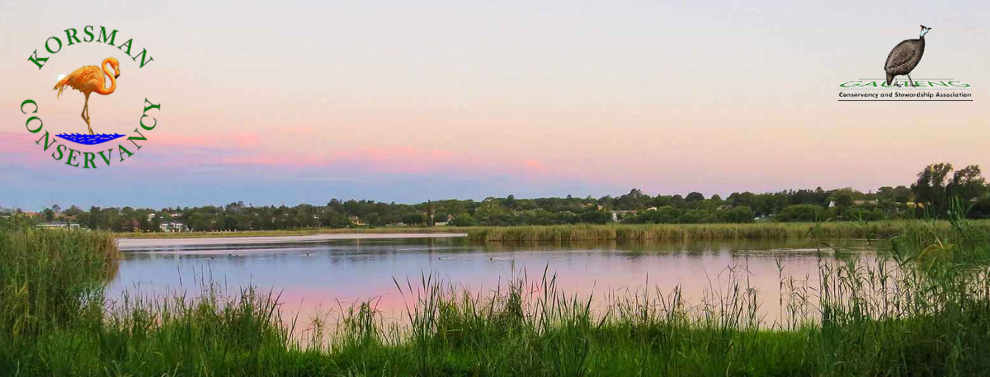
KORSMAN CONSERVANCY
Goliath Heron Observations
In Autumn 2016, a young Goliath heron arrived at Korsman. Because of the increasing population of invasive Category 2 carp (everything has a silver lining) Goli found plenty to eat and took up permanent residence.
All videos were taken from outside the fence.
2. Swallowing the catch
Goli takes the fish to the water's edge and lays it down, circling it and spearing it again until it is dead. Once, a crowd of curious flamingos came over to see what was happening while Goli was busy dispatching it.
Then Goli carries it around, frequently dropping it back into the water in the shallows, and prepares to swallow.
Goli can 'toss' medium sized fish directly into his bill, but bigger fish take several attempts to position and swallow. For the big ones, Goli stands with his head bent down to the ground for a full minute or two with the fish in its mouth, preparing for the big moment then lifts it up and gulps it down.
The whole process takes about five minutes for a big fish.
Afterwards, Goli lurches away off balance from his altered centre of gravity. He takes several sips of water and finds a spot to sit and digest for a couple of hours.
3. Food 'fails'
Goli doesn't eat every fish he catches. One fish was just too big and kept on slipping out of its bill. Goli also rejects seemingly suitable fish; he circles and pokes them then walks away without trying to swallow. (Later the fish disappear, probably scavenged by terrapins.)
When Goli caught a frog (Common platanna) although he shook and readjusted it until it looked like it would fly into bits, he just couldn't figure out how to position it to swallow. Eventually I gave up watching and still wonder if it went down.
4. Goli's call
Goli has a harsh 4-5x bark, used in different situations. The first times I saw Goli call, it appeared random as he was still alone in the pan (before he found a mate). I once saw the bark used against Grey-headed gulls pestering it.
When the Golis were breeding and a pair resident in the pan, they would often call near the nest to signal that they were returning, and even talk to each other - once heard:
Adult outside the nest: Kwaark.
Juvenile (13 weeks) in the nest: Wobbly Kwaark-kwaark-kwaark-kwaark-kwahark
Adult: Kwaark-kwaark-kwaark-kwaark-kwaark
The chicks 'hungry noise' is a very fast repeated chung-chung-chung-chung-chung.
5. Delta wing and gular fluttering
Golis sometimes sit with their wings open in 'delta' position, often also gular (throat) fluttering (panting) for temperature regulation. Often seen in juveniles.
1. Fishing techniques
Goliaths stalk fish leaning forward in open water or next to reed beds, where carp often lurk. They must have either good eyesight or instincts because the water is murky. They lunge for a fish, counterbalancing by drawing back their wings. Not every lunge is successful - Goli may miss or only partially 'spear' the fish. A successful catch harpoons the fish with his bill.
6. Flight
Goliaths have a wing span of two metres with distinctive slow wing beats.
7. Other things Goliaths do
They get itchy and scratch, they stretch, they visit high trees well above their normal habitat, and (as other birds do too) they lighten their load before flight....


